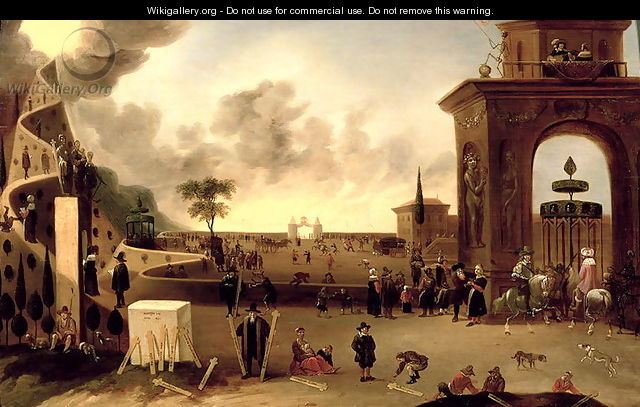[Greek] στενός (stenos): narrow, small, straight, tight; Mt.7:13,14, Lk.13:24

The Narrow Gate to Heaven and the Wide Gate to Hell: painting by Cornelis de Bie (1627-1715)
Background Information:
Greek Hellenism: This term means narrow, thin, paltry, and poor. In a literal sense, this term is often used for narrow topographical descriptions. In a nuanced sense, this term can mean difficulties, stresses, straits, threats, oppression, and enemies. Cebes, a disciple of Socrates, wrote the Tabula, a Stoic allegory somewhat similar to the scriptural passages referring to the narrow gate. The allegory states, “Seest thou not a certain small door, and a pathway before the door, in no way crowded, but very few go in? This is the way that leads to discipline.” This allegory is essentially a work of morality.
Old Testament: This term, often relating to events which overtake men, means narrow, tight, and difficult. In addition to its literal use, this term is quite frequently used in a nuance sense. Such nuanced examples include distress, scarcity, affliction, oppression, opponent, and hard pebble. Matthew may have received inspiration from the multiple examples of narrow spaces in the Old Testament. The Hebrews had ample experiences with affliction, oppression, adversity (tight situations) and scarcity. The angel of the Lord then went ahead, and stopped next in a passage so narrow that there was no room to move either to the right or to the left (Num.22:26). There is not enough room for us to continue to live here with you (4Kg.6:1). And the adulteress is a narrow pit (Prov.23:27). And all the depths (narrow passage) shall be dried up (Zech.10:11). A time of distress for Jacob, though he shall be saved from it (Jer.30:7). And you may be a help to your adversaries (Deut.32:43). This place is too cramped for me (Isa.49:20).
New Testament: This term means narrow as both Matthew and Luke refer to the narrow gate. Luke offers an invitation to enter the narrow gate, while Matthew offers a prophetic warning that the broad way (gate) leads to destruction. Most ignore this warning as they are not ready to accept the authority (advice) of Jesus. This contrast between the broad road and narrow road refers to the entry into the kingdom of heaven and the kingdom of hell. The scripture passage of the camel passing through the eye of a needle provides a sense of this narrow gate.
Scripture:
“Enter through the narrow gate; for the gate is wide and the road broad that leads to destruction, and those who enter through it are many. How narrow the gate and constricted the road that leads to life. And those who find it are few.” Mt. 7:13-14
Matthew provides a prophetic warning for those who choose to enter the wide gate.
“Strive to enter through the narrow gate, for many, I tell you, will attempt to enter but not be strong enough.” Lk.13:24
Luke offers an invitation to enter the narrow gate.
Conclusion:
Stenography, stenographer, stenosis
It was interesting to discover a Stoic (heathen) allegory of entering through a narrow door. Instead of seeking salvation, one seeks discipline. I wouldn’t be surprised if this idea was borrowed from scripture.
It was also interesting to find many nuanced uses of this term relating to tight (difficult) circumstances. Examples include affliction, adversity, oppression, enemies, and opponents.
In contrast to the Old Testament, this term is more “narrowly” defined in meaning narrow. I did not realize that Matthew and Luke offered two different interpretations to their respective scripture passages.
Stenography is the process of writing in shorthand or taking dictation. Spinal stenosis is the narrowing of the spaces within the spine.
Here is a salutation in parting from the late 14th century: God be with ye. Now we know this as—wait for it— Goodbye!
